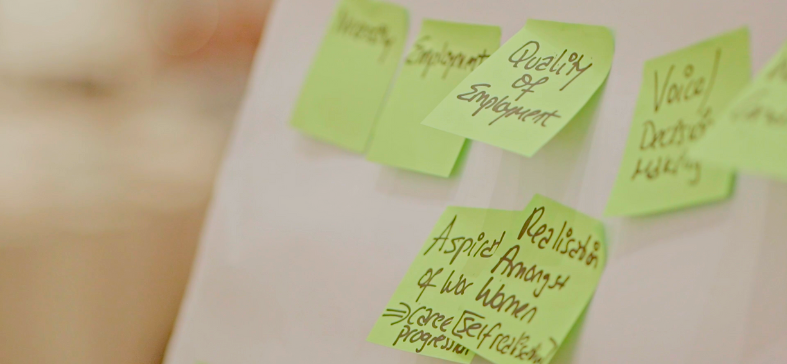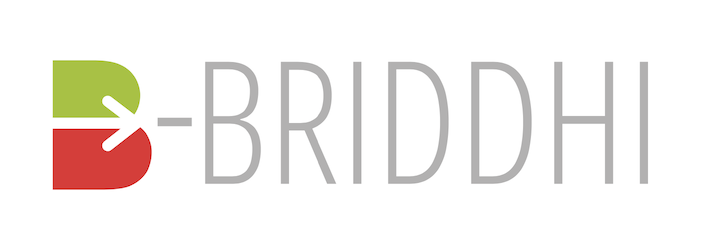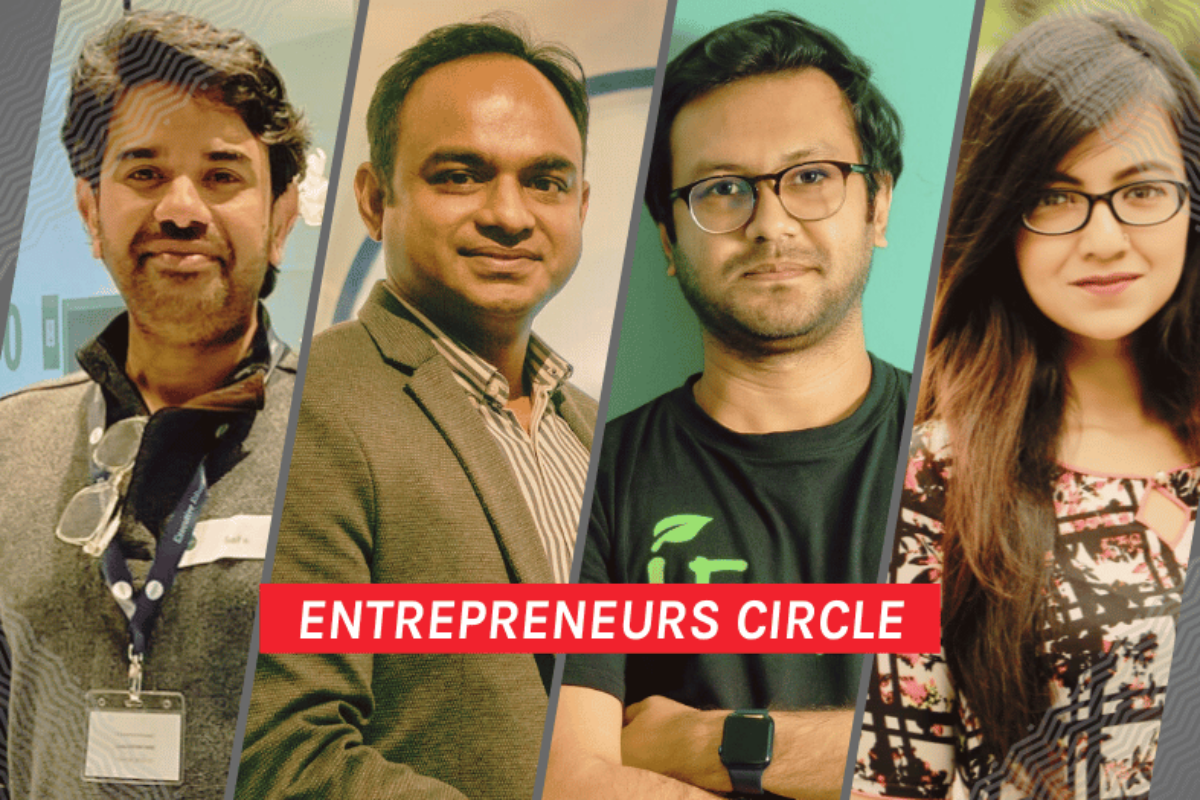How Impact Measurement and Management can be useful for Commercial Growth: Lessons from iFarmer and Apon Bazaar
The Biniyog Briddhi (B-Briddhi) programme has been mainstreaming impact management, pushing companies to go beyond simply measuring impact but rather start managing their impact like financial performance. The goal is to help impact-driven entrepreneurs better serve customers by optimising their impact performance.
To add greater depth to the Impact Measurement and Management (IMM) conversation through the experiences of entrepreneurs, the B-Briddhi Programme organised a Peer-to-Peer Exchange Event for local entrepreneurs on 13th December 2023. Two impact enterprises who received Social Impact Incentives (SIINC) funding from B-Briddhi were invited to share their IMM journey and disseminate valuable insights about how to make IMM more useful for commercial growth. The B-Briddhi team shared the virtual stage for a roundtable discussion with Fahad Ifaz (Co-Founder and CEO) and Archi Ananya (Impact and Partnership Manager) from iFarmer. Through its holistic service offerings, iFarmer provides farmers access to finance, training, knowledge, and markets. The company also enables individuals to invest their money in farms. The Event was also attended by Saif Rashid (Founder and Managing Director) and Yasir Arafat (Co-Founder and Director of Business) from Apon Bazaar. Apon Bazaar facilitates low-income workers’ access to credit for essential purchases through the operation of grocery stores in RMG factories without incurring additional costs. Moreover, their regular customers enjoy discounts and access to free health insurance.

Using customer needs to clarify strategic focus

Both founders from Apon Bazaar and iFarmer had experiences measuring impact in the non-profit sector prior to participating in B-Briddhi. Saif Rashid from Apon Bazaar remarked on this point by saying “…there are many different ways to do impact measurement […] you can do it the expensive way and make it too complicated.” His Co-Founder, Yasir Arafat agreed, mentioning that “we used to have 13 business KPIs, and on top of that 5 impact KPIs.” Having a separate list of KPIs for business and impact performance is certainly not uncommon. However, is measuring business and impact performance entirely separately the only valid approach?
“One of our [SIINC] KPIs was to increase our customers’ average savings, and this could happen if the customers purchase more,” Arafat shared. Once this KPI marrying impact and business performance had been identified, Apon could more seamlessly integrate impact measurement into their operations. For example, setting this KPI in their SIINC transaction further incentivizes Apon to collect data on individual product sales to track customer preferences, enabling them to understand the drivers behind purchasing decisions better.
“When impact becomes a core part of your business, you are not collecting data on impact, but they are data for your business.” – Saif Rashid, Founder and Managing Director, Apon Bazaar
Specifically, one would expect the female customer KPI to be an easy one to achieve since female workers are the majority in RMG factories. However, “when ROI asked for our data, we used to serve only 38-39% of female workers, and that was an insight,” Arafat shared. To better understand their impact on female customers, the Apon team also began collecting data to understand differences in purchasing behavior between their female and male customers. Disaggregating customer sales data by gender allowed Apon to spot impact variance more easily and observe how cultural norms affect sales. “In Bangladesh, mostly the male workers take care of grocery shopping.” Apon also discovered that certain staple items, such as rice and oil, are too heavy for female customers to carry. This insight prompted Saif and Yasir to implement a policy covering rickshaw delivery fares for female customers who purchase basket sizes larger than specified amounts. While implementing this new strategy allowed Apon to better cater to female customer needs, it also improved female customer satisfaction and the average basket size of female customers.
Fahad Ifaz from iFarmer shared similar experiences. “We got more clarity on how impact metrics are tied to the business…[the structuring process of SIINC] really helped us to think through and think in much more details [how impact is created].” As a result, iFarmer made a number of operational changes during the SIINC contract to change the type of data they collect and how they use that data within their business, “…in fact, it is not just for the SIINC report, but the data helps our supply chain business and planning.”

From proving to improving

Archi Ananya joined Fahad by sharing lessons about how iFarmer has leveraged impact measurement to optimise its operations. “Once we have clear targets on female inclusion, then we can share clear goals with our operations team in the front line about how many female farmers they need to onboard […] we found a lot of areas of improvement while measuring these metrics.”
To exceed their targets on a similar gender inclusion SIINC KPI as Apon, the iFarmer team investigated their own database to check the number of female farmers they were serving and the specific services they were already providing to them. Comparing those data sets helped iFarmer identify which sub-categories of services they should focus on growing throughout the SIINC contract and beyond to serve female customers better.
“The goal is not just to reach the number but to deliver positive changes to these female farmers.” Archi Ananya, Impact and Partnership Manager, iFarmer
Fahad also shared that the SIINC transaction helps hold iFarmer accountable for its impact performance over time, creating space for iterative impact improvement. “There is a meeting with the programme team after the impact data is verified, which helps us think through things (impact hypothesis) every six months,” Fahad explained the SIINC impact verification process, where an external entity measures and verifies results from its SIINC KPIs every six months. This process helps iFarmer check whether their Theory of Change still holds or requires further adjustment.

Elevate your commercial growth beyond reporting your impact
In sum, a key overarching commonality between what the panelists from iFarmer and Apon shared is that excelling in impact metric identification can benefit companies beyond helping to clarify “who” their target customers are and “what” gaps could be filled to serve them better. As Apon and iFarmer showed, impact data can also be used strategically to provide critical insights into “how” effective commercial operations are and where room for improvement lies. If done right, managing impact can become a long-term driver of customer-centric commercial growth.
There is an opportunity ahead for impact-driven entrepreneurs and their allies to show how IMM can be more useful beyond reporting to investors. This requires reframing IMM to be adaptive, iterative and strategic.
Want to learn more about how to achieve this? Please keep an eye out for the B-Briddhi call for applications, launching in May 2024, to further develop your IMM journey with us.
.



